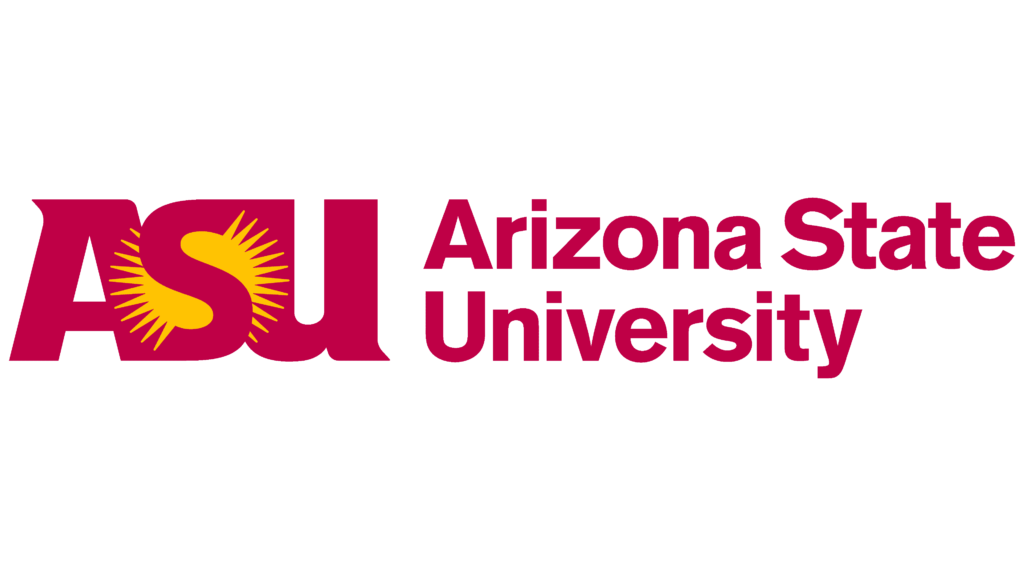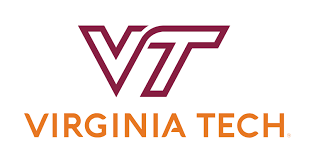
Acceptance rates are something college applicants are always concerned about. Yet, what are they, and are they so important in the application process? How should you evaluate university acceptance rates when you choose colleges for your list? What are the current acceptance rates for the top universities, and why do some colleges have low acceptance rates and others have high acceptance rates?
In this article, we’ll cover all these questions and hope to help you make a more informed decision about where to apply to increase your chances of being accepted.
- What does an Acceptance Rate Mean?
- What Is a Good Acceptance Rate for Colleges?
- Does Acceptance Rate Matter?
- Which College Has the Lowest Acceptance Rate?
- What College Has the Highest Acceptance Rate?
- What Is the Acceptance Rate for Harvard?
- What Is MIT Acceptance Rate?
- What Is NYU Acceptance Rate?
- What Is the University of South Carolina Acceptance Rate?
- What Is ASU Acceptance Rate?
- Why Is Tulane Acceptance Rate So Low?
- Why Is SDSU Acceptance Rate So Low?
- Why Is Rose-Hulman Acceptance Rate So High?
- Why Is Virginia Tech Acceptance Rate So High?
1. What does an Acceptance Rate Mean?
Let’s start with the definition:
An acceptance rate is a ratio of the number of applicants to the number of students accepted.
Acceptance rates are usually expressed in percentages (e.g., 6% or 48%), which makes the ratio easy to understand. For instance, Princeton had 37,601 undergraduate applicants for a place in the class of 2025 (as of Aug. 30, 2021), and only 1,647 were accepted. This makes the acceptance rate 4.3% ( which, in fact, was the lowest in the school’s history).
Another example: MIT had 33,767 first-year applications for the class of 2026, and only 1,337 were admitted, which equals a 3.96% acceptance rate (even lower than Princeton’s).
The number of spots available at this or that particular school influences the rate of acceptance, so larger colleges have more places, and they also have higher acceptance rates. Smaller schools will have fewer places and lower rates. Besides, the school itself, its prestige, and rating play a role in whether acceptance rates are high or low.
2. What Is a Good Acceptance Rate for Colleges?
Is there even such a thing as a “good acceptance rate”? As we’ve already explained, the nature of an acceptance rate is a ratio; yet, it depends on several factors. The total number of places and the size of school are not the only ones; college admissions can be influenced by other things, and even such things as a pandemic can play a role (as we’ve already learned).
One more thing about the “good acceptance rate” for colleges is that there can’t be one single number that all others can be measured against. It doesn’t work like this. Different colleges focus on different subjects, and there is simply no sense in comparing the acceptance rate of MIT with the acceptance rate of Juilliard or any medical school, for instance—they have different priorities.
Surely enough, there are colleges where it’s really hard to get into—Ivy League institutions, and there are colleges where you have high chances of being accepted.
Ivy League—Class of 2026
| Admitted | Applied | % | |
| Brown | 2,546 | 50,649 | 5.03 |
| Columbia | 2,253 | 60,377 |
3.73 |
| Cornell | 4,908 |
71,000 |
6.9 |
| Dartmouth | 1,767 | 28,336 |
6.24 |
| Harvard | 1,954 | 61,220 |
3.19 |
| Penn | 3,300 | 55,000 |
6.00 |
| Princeton | N/A | N/A | N/A |
| Yale | 2,234 | 50,015 |
4.47 |
The same goes for MIT, Stanford, Caltech, and several other schools. However, due to the factors we’ve just outlined, their college acceptance rates can’t be compared really objectively.
3. Does Acceptance Rate Matter?
So another good question is whether acceptance rates really matter. We suggest you use a different approach and try to use the information to make a well-informed decision. For example, you can use college acceptance rates to put your college application list in the most effective way possible. Don’t make up a list of 10 colleges that have the lowest acceptance rates; instead, weigh your overall performance in high school (GPA, standardized test scores, extracurriculars, awards, etc.) and be realistic. Include a few “reach” schools, a few “match” ones, and several “safety” schools to your list. By making it as diverse as possible, you increase your chances of getting accepted.
4. Which College Has the Lowest Acceptance Rate?
Here is the information about the lowest 2022 college acceptance rates for the ten top national universities and liberal arts colleges we’ve seen published:
| School | Lowest Acceptance Rate |
| Harvard University | 3.19% |
| Columbia University | 3.73% |
| Massachusetts Institute of Technology | 3.96% |
| Yale University | 4.46% |
| Brown University | 5% |
| Johns Hopkins University | 6% |
| Duke University | 6% |
| Vanderbilt University | 6% |
| Dartmouth College | 6.24% |
| Amherst College | 7% |
As you can see, Harvard has the lowest acceptance rate (according to Ingeniusprep). However, this data is acquired from open sources; we can’t guarantee that it’s absolutely relevant).
5. What College Has the Highest Acceptance Rate?
Here is the information about the highest 2022 college acceptance rates for the six top national high education institutions:
| School | Highest Acceptance Rate |
| University of Virginia | 19% |
| Georgia Institute of Technology | 17% |
| Middlebury College | 15% |
| Boston University | 14% |
| Wellesley College | 13% |
| University of Notre Dame | 13% |
In this list, the University of Virginia has the highest rate among high-ranking high educational institutions (according to Ingeniusprep).
6. What Is the Acceptance Rate for Harvard?
| School | 2022 Acceptance Rate | 2021 Acceptance Rate |
| Harvard | 3.19% | 3.4% |

Getting back to Harvard, this university is well-known for its selectivity and low acceptance rate. In 2021, 57,786 students applied to it, and only 2,320 were accepted, so the acceptance rate was 3.43%. And it seems that in 2022, the projected acceptance rate is expected to be even lower. Harvard stays true to its reputation, and it’s definitely a “reach school” for your list.
7. What Is MIT Acceptance Rate?
| School | 2022 Acceptance Rate | 2021 Acceptance Rate |
| MIT | 3.96% | 4.% |

We’ve already mentioned MIT as a school with a very low acceptance rate, and it ranks 8th on our list of most expensive colleges in the US. Following the overall tendency, its acceptance rate is expected to be even lower (and it has decreased dramatically compared to 7% pre-pandemic acceptance rates). In 2022, 33,767 first-year applications were received, and 1,337 were accepted (which equals a 3.96% acceptance rate). All in all, however, MIT saw a 2% increase in the number of applicants from last year. Read more about their acceptance rates on the official website of the Massachusetts Institute of Technology—another “reach school” for your list if you are after STEM subjects.
8. What Is NYU Acceptance Rate?
| School | 2022 Acceptance Rate |
| NYU | 12.2% |
![]()
One more “reach school” we’re going to highlight in this guide is New York University, which has higher rates compared to the previous institutions, which may or may not mean that you have better chances of being accepted. It is still quite selective; in 2022, of 105,000 applications, only 12.2% of applicants were admitted. Also, check the following acceptance rates by college: the College of Arts and Science (7%), the Stern School of Business (7%), and the Rory Meyers College of Nursing (3%)—they are quite low, aren’t they?
9. What Is the University of South Carolina Acceptance Rate?
| School | 2022 Acceptance Rate | Projected Acceptance Rate 2022-2023 |
| University of South Carolina-Beaufort | 62.8% | 59.1% |
| University of South Carolina-Aiken | 55.7% | 51.4% |

According to the Acceptance Rate website, the University of South Carolina’s acceptance rate sits somewhere in the middle, so we can say it’s a possible “match school” for your list of potential colleges to apply to.
10. What Is ASU Acceptance Rate?
| School | 2021 Acceptance Rate | Projected Acceptance Rate 2022-2023 |
| ASU | 88.2% | 79.1% |

Arizona State University, with its high acceptance rate, had 14,250 first-year applicants and accepted 88.2% of students in 2021, can be safely added to your list as a “safe school,” of course, if it offers the specialization you are interested in.
11. Why Is Tulane Acceptance Rate So Low?
| School | 2022 Acceptance Rate |
| Tulane University of Louisiana | 8.4% |

Now, let’s try to understand why some colleges’ rates are so low. For instance, why is Tulane’s acceptance rate so low? According to the Office of Undergraduate Admission of Tulane University of Louisiana, 43,019 applications for admission were received for the Class of 2026, and admission was offered only to 8.4% of applicants. The thing is that it’s among the lowest, and the university is becoming even more selective over the years, according to US News. Why so? One of the reasons is that Tulane has been a prestigious university; it’s always been selective with a highly competitive admission process. Another possible reason is that the university has increased its financial aid packages (which attracts more applicants), but the number of places available is the same.
12. Why Is SDSU Acceptance Rate So Low?
| School | 2020 Acceptance Rate | Projected Acceptance Rate 2022-2023 |
| SDSU | 34.1% | 32.1% |

With about 36,000 students enrolled yearly, San Diego State University admission is quite selective, with an acceptance rate of 37%, though we can’t say it’s excessively low. In 2022, however, more than 99,027 undergraduate applications were received in total: 76,792 first-year undergraduate applications plus transfer students. If 7,000 graduate applications are added, it makes more than 106,000 overall—for the first time in the university’s history. With more students applying, the rate of acceptance will probably decrease even more in the future.
13. Why Is Rose-Hulman Acceptance Rate So High?
| School | 2021 Acceptance Rate | Projected Acceptance Rate 2022-2023 |
| Rose-Hulman | 77% | 63.6% |

RHIT (Rose-Hulman Institute of Technology) is moderately selective: 77% of applications were accepted in 2021 (4,536 students applied, and 3,493 were admitted). The school expects students to meet their requirements for GPA and SAT/ACT scores, but they’re more flexible than other universities. One of the reasons why the acceptance rate is relatively high is because RHIT is a #1 undergraduate engineering school that focuses on STEM subjects specifically. Another reason is that it is small and located in Terre Haute, Indiana, which makes it a less popular and prestigious destination than MIT, Stanford, Caltech, etc., right away. Being a strictly engineering school, Rose is also very self-selective: the students who apply to it are pretty much sure that they want the career path in engineering and math, so the number of applicants is also lower than the one the aforementioned MIT gets (2021: 4,536 RHIT versus 33,767 MIT). One more thing that plays a role is that Rose doesn’t offer a doctorate of the same level MIT or Stanford do. Though it has a grad school, Rose’s focus is not on research; they provide their students with as much practical knowledge and experience as possible, with professors coming right from the industry. Therefore, Rose’s acceptance rate is lower compared to other engineering colleges: they fill the places with those students who seek exactly what the school has to offer.
14. Why Is Virginia Tech Acceptance Rate So High?
| School | 2020 Acceptance Rate | Projected Acceptance Rate 2022-2023 |
| Virginia Tech | 70.0% | 63.8% |

In 2022, Virginia Tech (Virginia Polytechnic Institute and State University) received 45,214 first-year student applications (compared to a 42,084 record set in 2021, with 23,806 admitted and 6,918 enrolled). Their acceptance rate in the previous years ranged around 70%, which is moderately competitive, though, it’s expected to get lower in the future. Why is it considered high? The thing is that Virginia Tech is a big university that receives fewer applicants than yet again Ivy League schools. However, some of their majors (e.g., engineering) are very competitive.
Conclusion
As you can see, college acceptance rates are just numbers that depend on a variety of factors, and it’s good to understand why some schools have low rates, and others have high ones.
However, we at BookScouter would recommend taking acceptance rates only as the information that can guide you and help you understand how much effort you need to make during the preparation stage. Having this information, you can compile your school list rationally by mixing “reach schools” with less selective and even safe options. Yet, you should also remember that your school list should be based on other variables as well: faculty, employment rates, the school’s location and atmosphere, and the availability of opportunities. Colleges with higher acceptance rates frequently offer financial aid on a larger scale than more selective schools, so if tuition fee is one of the decisive factors, you have to keep this in mind as well.
Also, understanding why the rates are high or low for this or that college is also important, as you can make a decision based on whether you want to pursue a practical path in your career or go deeper into research and thus choose a school that has an option of a doctorate.
So instead of choosing a college based on its acceptance rates only, choose what you want to do in the future and apply to the best fitting school for you.



